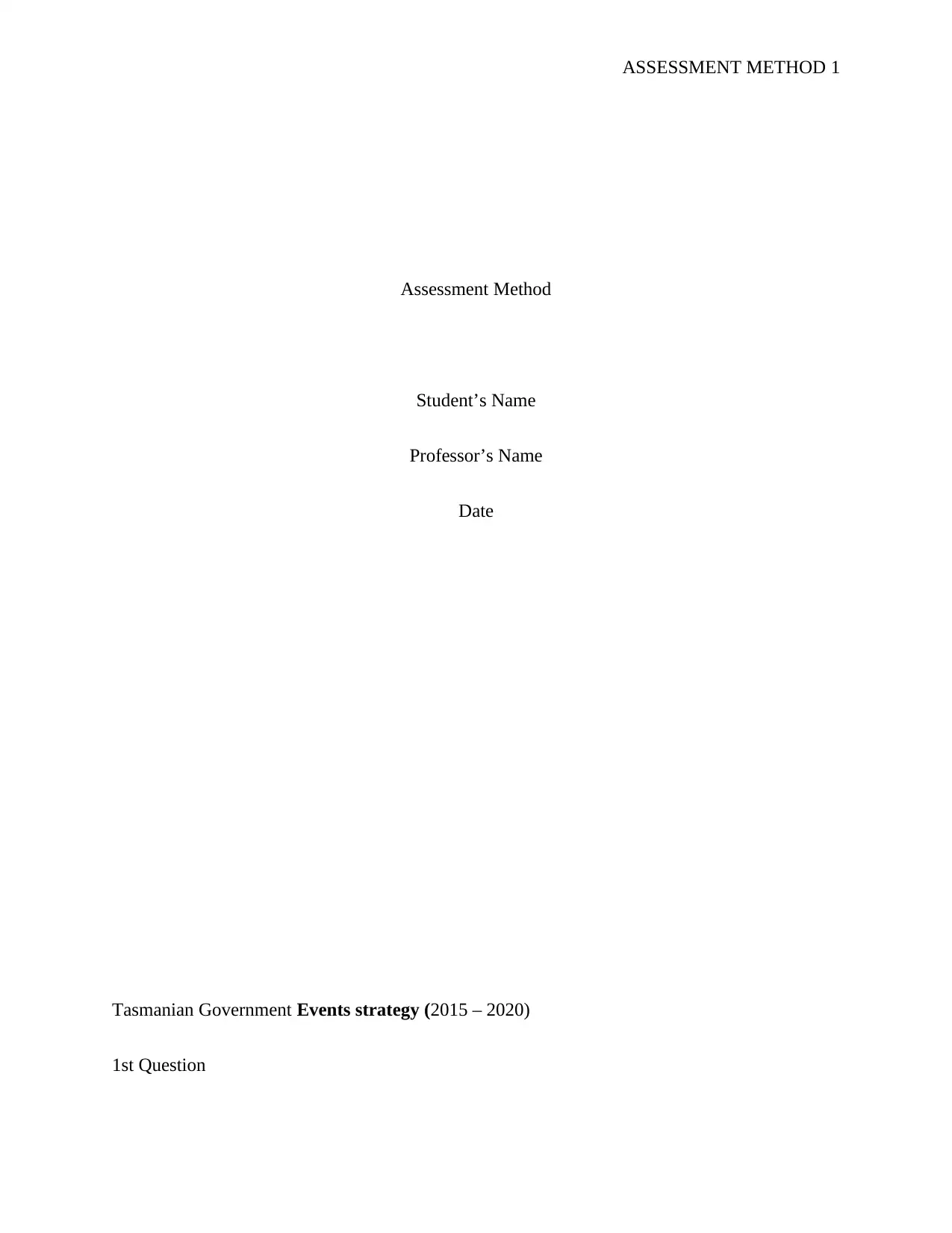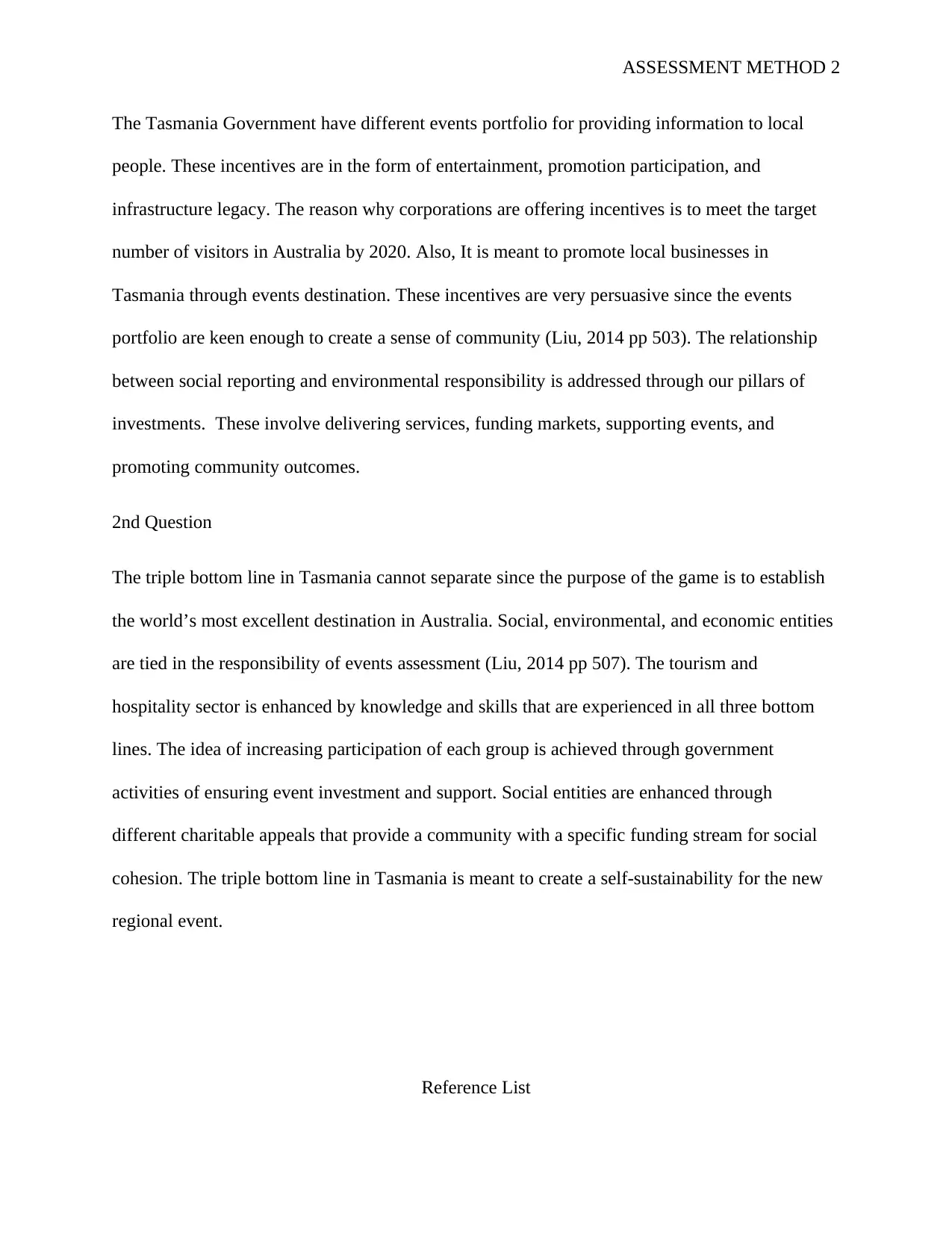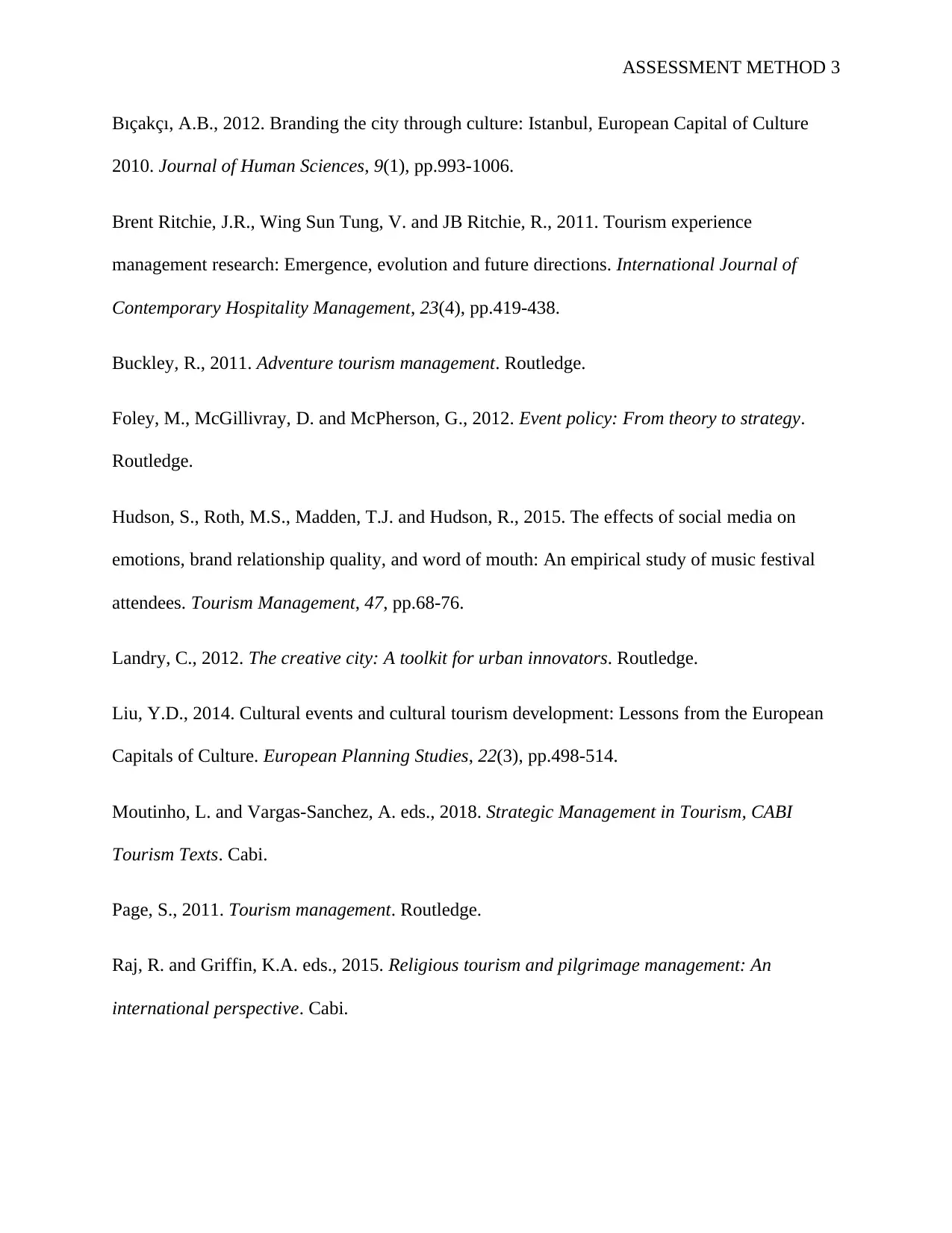BMA236: Assessment of Tasmanian Government Events Strategy 2015-2020
VerifiedAdded on 2022/09/21
|3
|552
|18
Homework Assignment
AI Summary
This assignment analyzes the Tasmanian Government Events Strategy (2015-2020), focusing on its objectives and implications for the tourism and hospitality industry. The analysis examines the strategy's goals of attracting 1.5 million visitors by 2020, emphasizing events as a key driver. The document reviews key ideas from journal articles related to event management, social media's influence on customer relationships, and the role of cultural capital in event-led regeneration. It explores the triple bottom line (social, environmental, and economic) in the context of event assessment and the importance of community engagement. The assignment also addresses the government's incentives, the creation of a sense of community, and the promotion of local businesses through events. The analysis highlights how the strategy aims to make Tasmania the boutique events capital of Australia, with investment pillars supporting service delivery, market funding, event support, and community outcomes.
1 out of 3








![[object Object]](/_next/static/media/star-bottom.7253800d.svg)